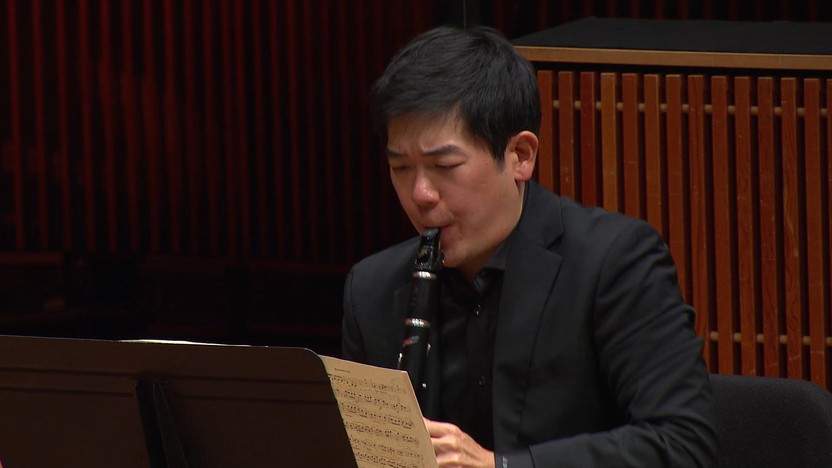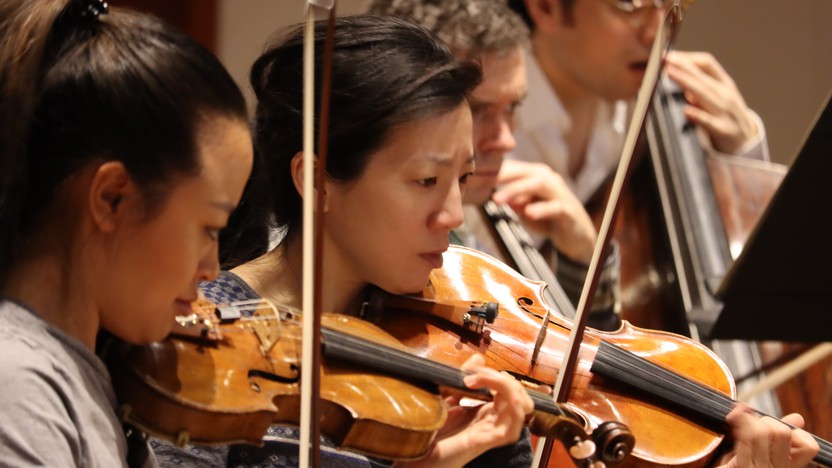Details
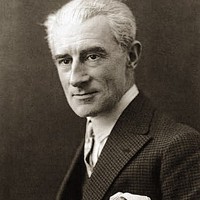
Maurice Ravel
Introduction and Allegro for Harp, Flute, Clarinet and String Quartet
Sang Yoon Kim, clarinet
Maureen Nelson, violin
Kyu-Young Kim, violin
Hyobi Sim, viola
Sarah Lewis, cello
Rachel Brandwein, harp
Two masterpieces of the harp repertoire, one by Maurice Ravel and the other by Claude Debussy, owe their existence to a rivalry between manufacturers. The Pleyel Company unveiled a new chromatic harp in 1897, and in 1904 they commissioned Debussy’s Danse sacrée et danse profane for harp and string orchestra as a showpiece for the instrument. The next year, Érard responded by asking Debussy’s young rival Ravel to write a feature vehicle for their competing double-action pedal harp, which is still the gold standard design with its seven pedals spread on both sides of the harp’s base.
Ravel dashed off the Introduction and Allegro quickly before leaving for a cruise, confessing in a letter that June, “a week of frantic work and three sleepless nights enabled me to finish it, for better or worse.” He made sure to show off the harp’s characteristic arpeggios and sweeping glissando, and he also took advantage of the ethereal sonority of harp harmonics. He even entrusted the harp with broad, singing melodies, freeing it from its traditional role of accompanist. There is some of Debussy’s impressionistic dreaminess in the hazy introduction, but the bubbling rhythms, Spanish-inflected harmonies and repeating ostinato patterns in the Allegro section are pure Ravel.
Aaron Grad ©2021
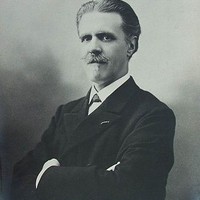
Vincent d’Indy
Suite dans le style ancien (Old Style Suite)
Alicia McQuerrey, flute
Lynn Erickson, trumpet
Maureen Nelson, violin
Kyu-Young Kim, violin
Hyobi Sim, viola
Sarah Lewis, cello
A methodical composer, conductor and educator, Vincent D’Indy made a place for himself at the center of French musical life in the transformative final decades of the nineteenth century. As a student at the Paris Conservatoire, he idolized his organ teacher, César Franck, and he expanded his horizon through trips to Germany to study piano with Franz Liszt and to attend Richard Wagner’s Ring cycle of operas. Another crucial source of inspiration for D’Indy was music from his country’s distant past, leading him to become a devoted conductor and editor of early music. That influence shines through in his “Suite in the Olden Style,” composed for an unusual ensemble of trumpet, two flutes and string quartet in 1886.
The trumpet had enjoyed its first heyday in the Baroque era, at a time when the instrument had no valves, requiring players to create all the pitches with precise adjustments of their lips and breath. Instrument design progressed rapidly in the mid-1800s, and by the time D’Indy wrote his Suite, French musicians were exploring all the possibilities of the growing lineup of valve trumpets, including the trumpet in D. Pitched slightly higher than standard trumpets and possessing a bright and clear tone, these instruments were the best available option at the time for playing Baroque solos on valve trumpets. Some of the flourishes D’Indy wrote for the trumpet in D mimic the fanfare rhythms and high-flying melodic range typical of the Baroque era’s “natural” trumpets, but other details take full advantage of the new instrument’s wide range and dynamic control, like the quiet long tones of the Prelude that melt into the moving figures from two flutes. Historical dance rhythms in the Sarabande and Menuet and formal counterpoint in the finale add to the antique sheen.
Aaron Grad ©2021
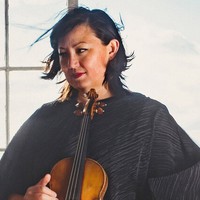
Michi Wiancko
Island in the Sky for Solo Clarinet (SPCO Commission)
I completed this piece while driving across America with my family, from west to east through 15 states. We lingered long in Utah, Colorado and New Mexico, and I found deep musical inspiration in the majestic specificity of each windswept mesa, ancient desert, winding canyon and rock formation we explored along the way. It was finally against the backdrop of the Island in the Sky mesa, located in Utah’s Canyonlands National Park, that my piece for solo clarinet carved a space for itself, inspired by the power and persistence with which water and wind can cut through rock.
Many thanks to clarinetist Sang Yoon Kim for his brilliant virtuosic and artistic interpretation of this piece.
Michi Wiancko ©2021
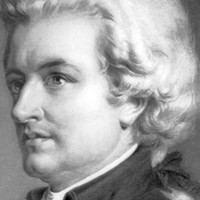
Wolfgang Amadeus Mozart
Divertimento No. 11
James Ferree, horn
Ronald Beitel, horn
Eunice Kim, violin
Nina Tso-Ning Fan, violin
Dana Kelley, viola
Joshua Koestenbaum, cello
Zachary Cohen, bass
Mozart, the onetime child prodigy who had dazzled audiences all over Europe, found himself in an unexpected predicament in his early adulthood. Through his teens and into his early twenties, he was stuck in his hometown of Salzburg, working for a troublesome Archbishop alongside his overbearing father, Leopold. Young Wolfgang fulfilled his basic duties by writing a certain amount of church music, but on the side he cultivated his own patrons in Salzburg and beyond. Through the many symphonies and concertos he wrote for private clients in those years, along with all the lighter forms of musical entertainment, Mozart brought his instrumental craft to a new level of mastery, and he also proved the viability of working on his own. It ultimately gave him the confidence, at age 25, to quit his Salzburg job and launch a freelance career in Vienna, where he spent the miraculous final decade of his life.
When composers of Mozart’s day were asked to entertain their patrons with party music, they dashed off simple, lighthearted works — divertimentos, serenades, nocturnes and the like — that were hardly worth reusing or remembering. But Mozart being Mozart, even his light music from his Salzburg years has withstood the test of time. He probably composed this Divertimento for his own sister’s name day in July 1776, and it must have delighted a gathering of family and friends who got to hear this six-part suite for oboe, two horns and strings. Mozart, a strong violinist, probably led the ensemble from the first violin chair.
The Divertimento begins with a substantial movement in sonata-allegro form, a structure built around two contrasting keys. Using a trick that turns up more often in Haydn’s music (which Mozart knew well, since Haydn’s brother was a composer in Salzburg), Mozart designed it so that the same theme appears in both the home key and the contrasting key area. Two noble minuets bookend the charming Andantino, and a brief march in the French style adds a final flourish after the energetic Rondo.
Aaron Grad ©2021
About This Program
This program offers a study in contrasts between the colorful and sensual music of late 19th-century France and the stately, classical style of Wolfgang Amadeus Mozart. There is something for everyone to love in this concert of chamber music for winds and strings. Michi Wiancko’s Island in the Sky was inspired by the unique geographical features of the American southwest, striking a further contrast with the music that surrounds it.
All audience members are required to present proof of full COVID-19 vaccination or a negative COVID-19 test within 72 hours prior to attending this event. Masks are required regardless of vaccination status. More Information
Concerts are currently limited to 50% capacity to allow for distancing. Tickets are available by price scale, and specific seats will be assigned and delivered a couple of weeks prior to each concert — including Print At Home tickets. Please email us at tickets@spcomail.org if you have any seating preferences or accessibility needs. Seating and price scale charts for the Ordway Concert Hall can be found at thespco.org/venues.
Contribute
SPCO concerts are made possible by audience contributions.
Newsletter
For exclusive discounts, behind-the-scenes info, and more:
Sign up for our email club!

